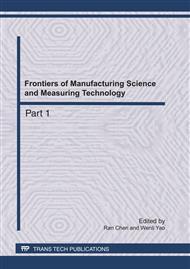p.362
p.367
p.372
p.377
p.384
p.389
p.395
p.400
p.405
The Numerical Simulation of GH4169 Alloy during Cross Wedge Rolling
Abstract:
The metal microstructure of a product formed by cross wedge rolling (CWR) has much effect on the comprehensive properties of the final product. The microstructure model of GH4169 alloy was programmed into the rigid-plastic finite element software DEFORM-3D by the secondary development in this paper, so the microstructure evolution during the CWR process can be simulated. The finite element model (FEM) that coupled deformation, heat transfer and microstructure evolution was established. Based on the model, the evolution of microstructure of GH4169 alloy in the process of CWR was realized with the simulation. The strain, strain rate, temperature and the distribution of grain size of the part were obtained in the whole process of CWR. The simulation results show that the dynamic recrystallization is the main grain refinement mechanism for the CWR process and the grain refining effect of the workpiece during the CWR process is remarkably.
Info:
Periodical:
Pages:
384-388
Citation:
Online since:
May 2011
Authors:
Price:
Сopyright:
© 2011 Trans Tech Publications Ltd. All Rights Reserved
Share:
Citation:


